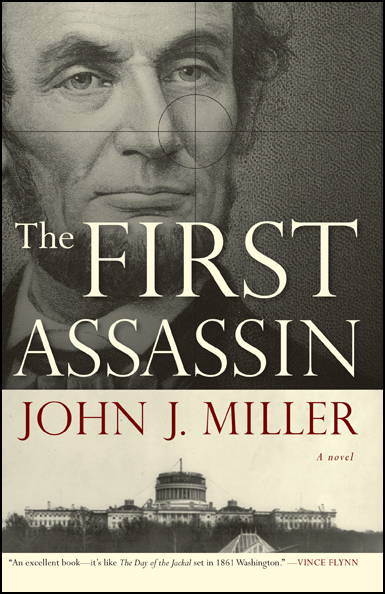 As I noted in this post a few weeks ago, pal of The Cimmerian John J. Miller recently published his first novel, a Civil War-era thriller titled The First Assassin. Sales have been gratifying, with the book hitting #468 on Amazon.com’s numerical rankings at one point.
As I noted in this post a few weeks ago, pal of The Cimmerian John J. Miller recently published his first novel, a Civil War-era thriller titled The First Assassin. Sales have been gratifying, with the book hitting #468 on Amazon.com’s numerical rankings at one point.
However, some guys hiding behind pseudonyms have mounted a coordinated attack on John’s book at Amazon.com, writing short bilious reviews and then tagging each other’s comments as “Helpful” so they gain weight and rise to the head of the list. It’s a clear attempt to hurt Miller’s sales and reputation, spearheaded by people who haven’t even read the book, based solely on their opinion about John’s day job.
Now those of you who read and enjoy this blog know how good Miller has been to REH and his fans. He’s published positive articles on REH in national venues, taking care to get his facts straight. He’s plugged the work of REH scholars like Rusty Burke and Paul Sammon in both written and podcast interviews. I can think of no other reporter who has done a better job of promoting Howard and his work to mainstream newspaper and magazine audiences. We all know how often REH gets skunked by reporters via error-riddled jeremiads, so this track record is no small feat.
If you are at all appreciative of the numerous kindnesses Miller has showered upon the field of Howard Studies, I urge you to visit the Amazon page for The First Assassin and take a minute to help pay back that karmic debt. Of course, if you haven’t read the book you shouldn’t write a review. But there’s nothing stopping you from reading the reviews already there, determining which ones are from people who freely admit to not having read the book, and then clicking NO on the question, “Was this review helpful to you?” As of this writing, the following reviews have numerous “helpful” votes:
“No WONDER this was rejected by any sane publisher!!!!!!”
“Never has Amazon’s preview function performed its task so admirably. Save your pennies and buy some comic books instead–they’re still your best entertainment value!”
“. . .the leaden, awkward prose and contrived storyline ensures that this is a book which will require the assistance of powerful chemical stimulation to finish.”
“Any reasonably literate person need only peruse the “look inside” function to get a sense of how crushingly poorly written this book is. There’s a reason it’s being self-published through a vanity press/laser printer shop.”
“I can’t help but feel that competition for this year’s Bulwer-Lytton Fiction Prize is over.”
These are all people who freely admit to not having read the book. It would be great if Cimmerian readers could reverse this ratio by clicking NO to “Was this review helpful?” and thus marking these for what they are: literary drive-by shootings of no help to truly interested readers whatsoever.
Furthermore, if you agree that any or all of these violate Amazon’s Terms of Service for reviews, which forbids “Profanity, obscenities, or spiteful remarks,” you can click on “Report This” and the the “Report as Inappropriate” button to alert Amazon that they should remove the review entirely. I think such extremely negative reviews — written in lockstep by a bunch of people who freely admit to not having read the book — certainly qualify.
There are also comments attached to each review, with the same nameless hooligans causing more mischief there. Each comment asks you to rate whether it contributed to the discussion — you can click NO to these as well if, like me, you disagree with what these guys are doing to John.
John J. Miller has done REH fandom many good turns over the last few years. Here is an opportunity to do one back. If you enjoyed the Cimmerian print magazine, and continue to enjoy the blog, you’d be doing me a special favor by following these links over to Amazon and helping to defend a solid friend of REH against those who would ruin the launch of his novel, a book that he worked on for thirteen years.

 a mere thirteen years old when I started.
a mere thirteen years old when I started.












